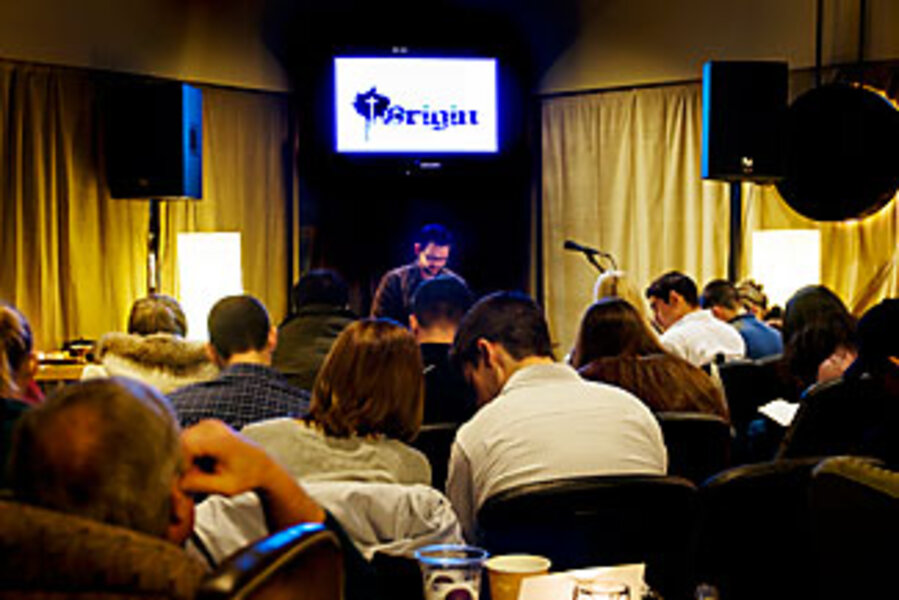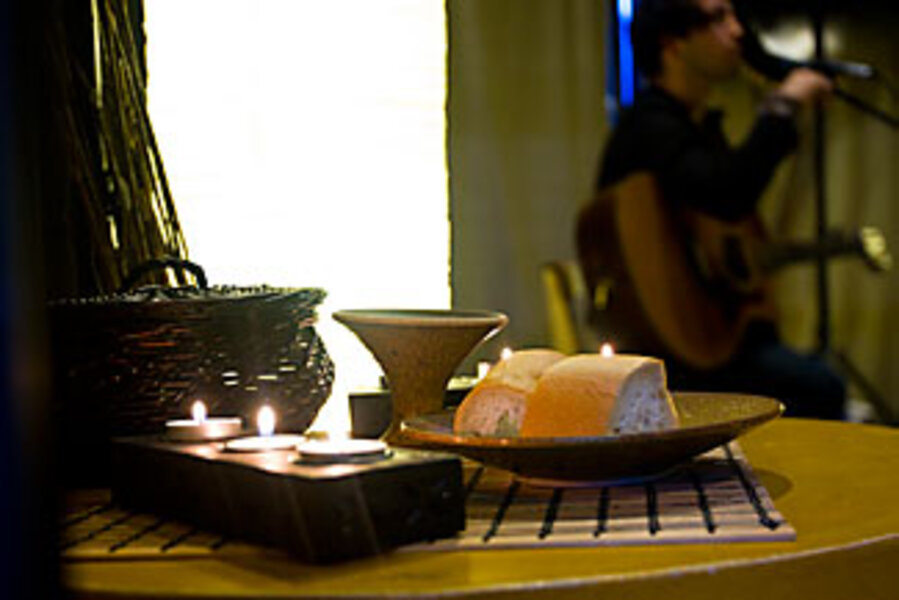Churches without the church
Loading...
| Newburyport, Mass.
When Barry Diamond first told fellow ministers that his Las Vegas church was preparing to leave its 12,000-square-foot rental space in April and worship instead in members' homes, they warned him he was "committing ministry suicide."
But Pastor Diamond and The Village, as his nondenominational church is known, have survived. Fifteen homes now hold intimate services twice a month. On other Sundays, they dip into funds previously earmarked for rent and use them for special events and outreach, such as a May block party for local African refugees. Now other church leaders want to know how they might follow suit.
"I don't know if we uncovered a model that people are longing for or what," Diamond says. "But I have six appointments over the next three or four weeks with [church leaders] who are flying into Las Vegas just to meet and talk about it."
Leaving a building with no plans for a new one used to be a hallmark of a failed congregation. In this recession, however, a growing number of hard-hit churches are struggling to pay rents and mortgages. That has some thinking about the formerly unthinkable: being a church without a building – and they are getting encouragement from building-free congregations who wouldn't have it any other way.
Since the economic downturn began, six financially stressed churches in various states have sought advice from The Well in California's Orange County. It's a 57-year-old Southern Baptist congregation that quit its $5,000-per-month lease in 2005 and formed what has become a network of five house churches. Sensing a need among financially strapped churches, Pastor Ken Eastburn in April launched a website – leavethe buildingblog.com – to assure struggling churches there's spiritual life after bricks and mortar.
"We didn't really start out encouraging churches to do this, but people who would hear our story started to contact us over the last year," says Pastor Eastburn, whose church has grown from 50 to 75 members since leaving its rented facility. "If this model is something that works, and if we can help other churches [adopt it], then maybe this is what God has us doing right now."
Churches that are partially or entirely building-free come in a variety of forms:
•The one-year-old Origin Community Church meets in a Rocklin, Calif., coffeehouse. Childcare happens in a retrofitted school bus and a motor home parked outside.
•The Outdoor Church, launched last summer in West Virginia's Hampshire County, meets at least once a month on hiking trails, in canoes, or in another adventurous natural setting.
•Cornerstone Community Church in Simi Valley, Calif., is saving millions of dollars by expanding into an outdoor amphitheater rather than a new building.
For growing numbers of churches, out-of-the-building thinking has become a necessity. Evangelical Christian Credit Union in Brea, Calif., services some 1,000 ministry loans and has foreclosed on nine churches since the economic downturn began. It expects to foreclose on two more this year, according to spokesperson Jac La Tour. From inception in 1964 until 2007, the ECCU had never had a foreclosure.
Strapped or not, few established congregations opt to shift from a traditional model to a building-free church. The change is usually too extreme for a habituated community to pull off, according to Todd Johnson, director of the Center for the Study of Global Christianity at Gordon-Conwell Theological Seminary in South Hamilton, Mass. But he adds that for some new church start-ups, a building-free vision may appeal, in part because it dovetails with a larger trend.
"As society becomes more secular, there's a desire to remove the religious barrier in people's thinking, and that's where you get houses and gymnasiums" functioning as worship spaces, Mr. Johnson says.
For congregations new and old, going building-free has financial advantages. Origin Community Church, for instance, gives 50 percent of its collection to outreach projects. The Village in Las Vegas has slashed overhead expenses from 70 percent of its budget to just 30 percent, leaving the savings for such outreach projects as a refugee center renovation in Phoenix and orphanage construction in Mexico.
Boosters of the building-free model also tout the spiritual benefits. At The Well, groups embrace spontaneity, such as when worshipers cut prayers short one day to help a neighbor paint his fence.
"We're concerned not just with what the early Christians taught but also what they practiced," says Rick Thompson, an attendee of a Cambridge, Mass., house church and adviser to other house churches in New England.
Going building-free has drawbacks, too. Eastburn of The Well acknowledges his congregation can't offer as much youth programming as a congregation with a facility of its own. Diamond, the Las Vegas pastor, says his church lost about half its 400 regular attendees when it bade goodbye to its rented facility.
Still, the prospect of doing church without real estate has excited at least one megachurch pastor.
"The Sunday morning setup where people go to church, listen to a speaker, sing some songs together ... is passive for the most part," said Greg Boyd in an interview last year. The pastor of Woodland Hills Church in Maplewood, Minn., which has 3,000 weekly attendees, added: "The kingdom is about participation and about sacrifice.... We may even get rid of the building at some point because it could get in the way."






